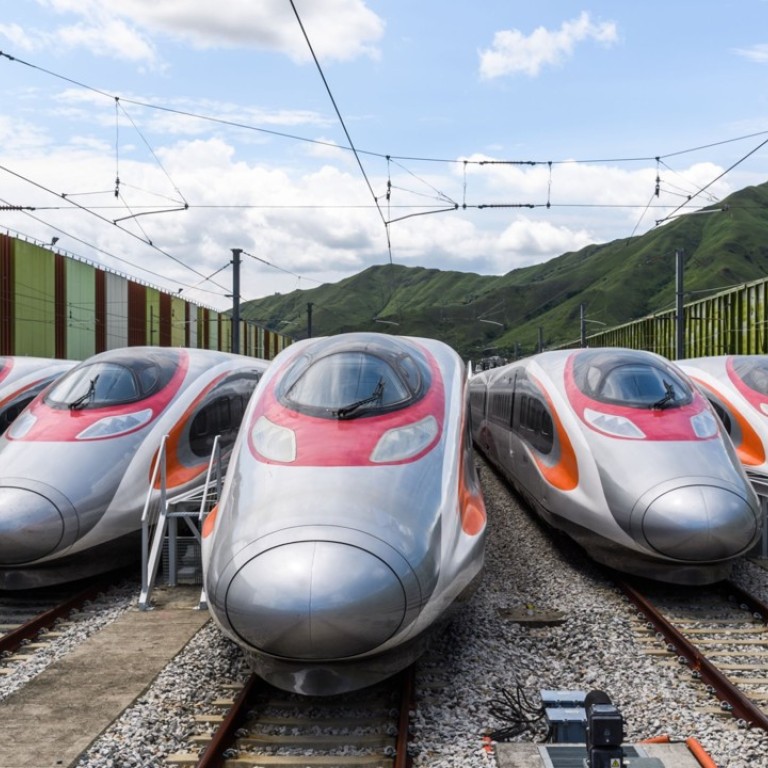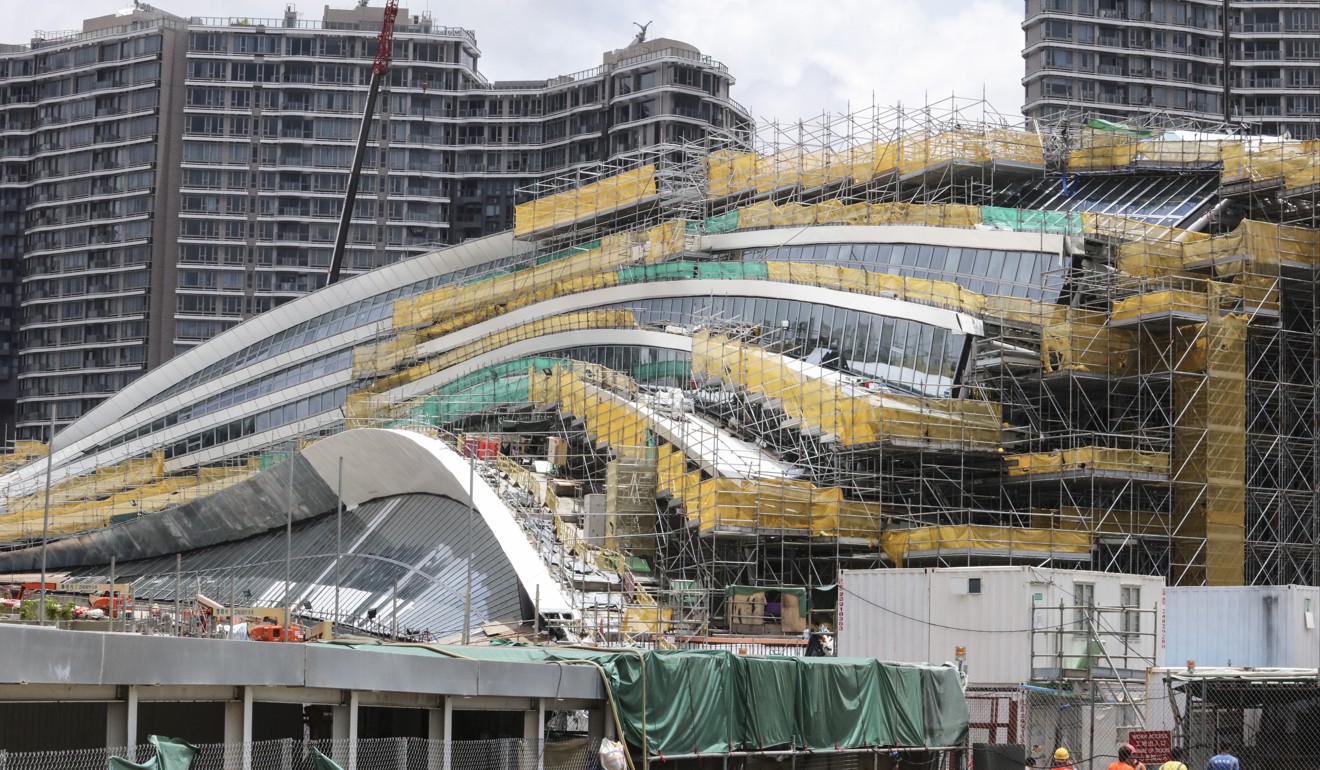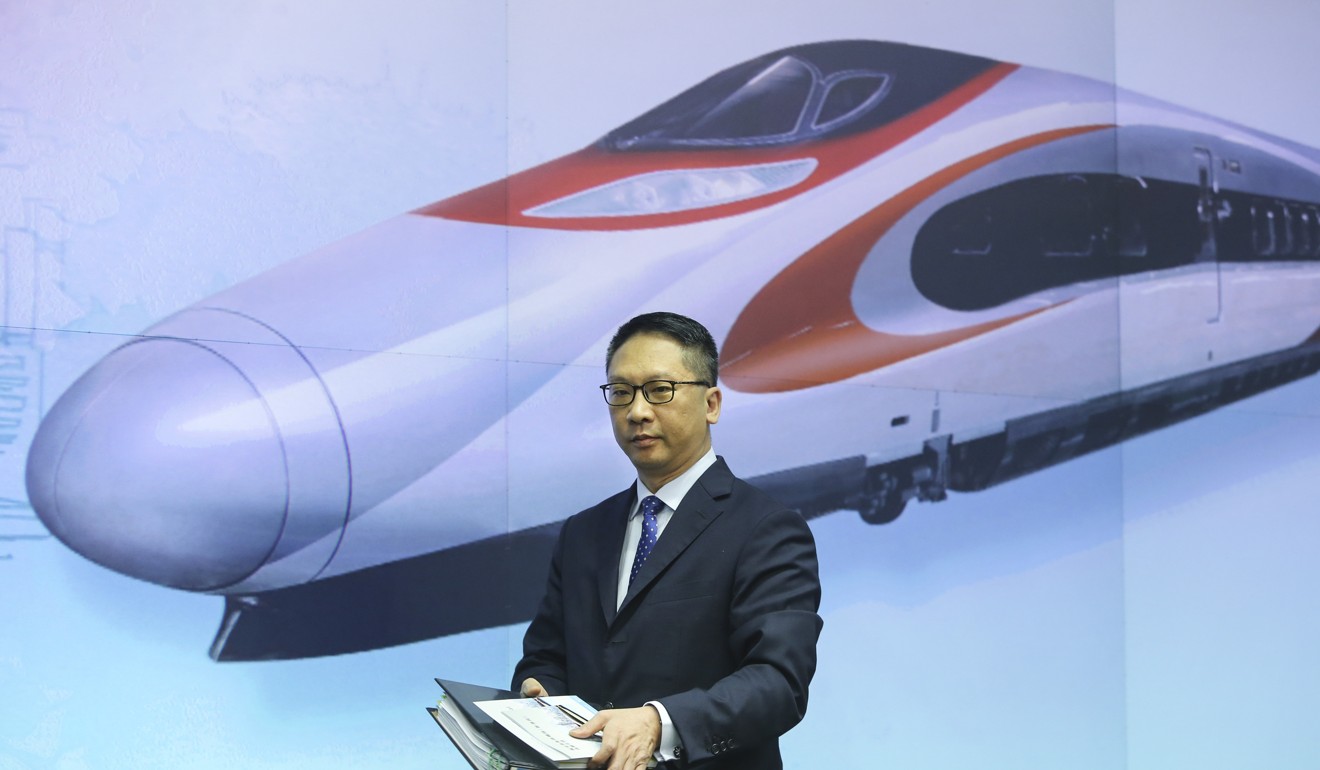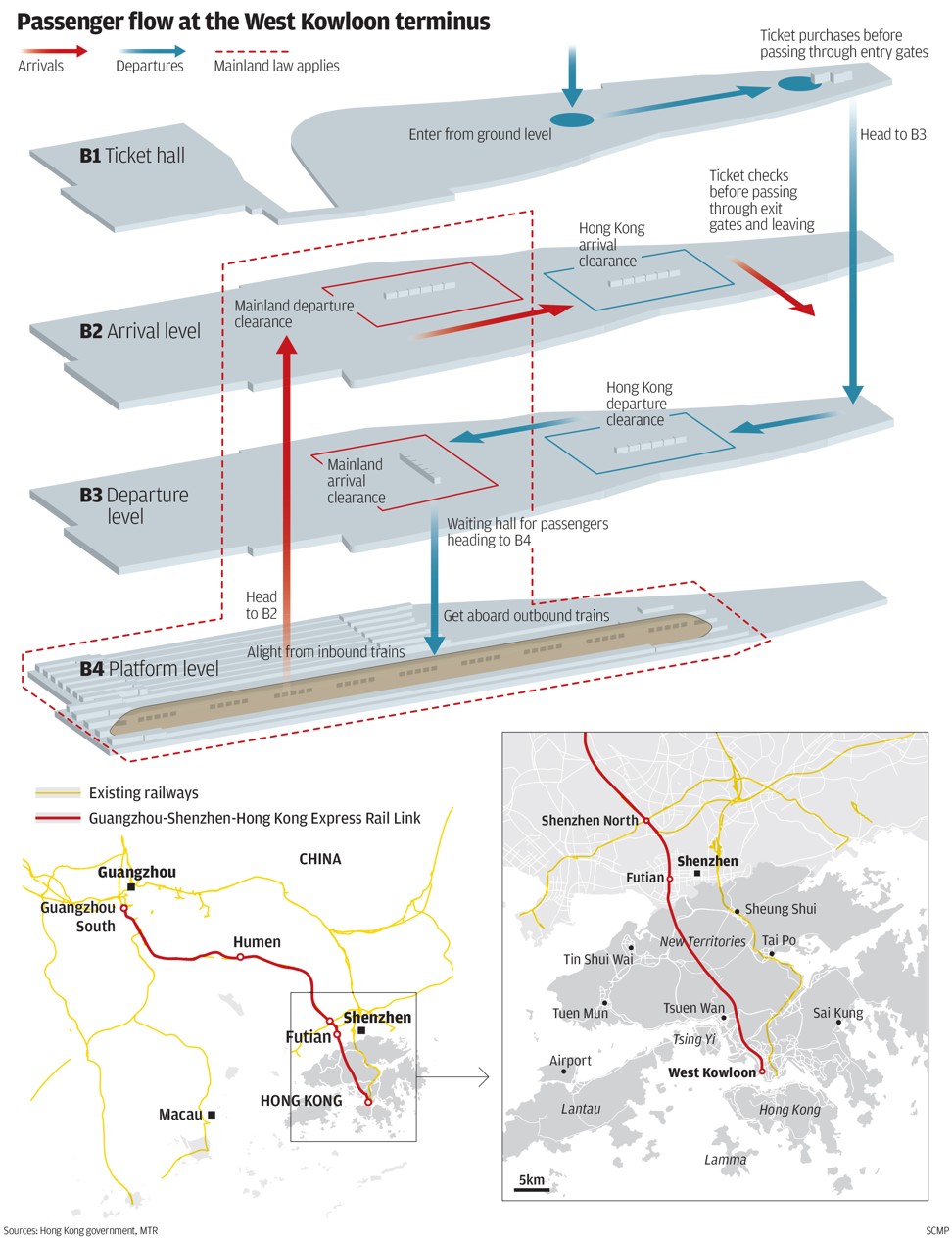
One station, two systems: how joint checkpoint will work for Hong Kong-mainland China high-speed rail line
Authorities release long-awaited details of floor plan for terminal and steps passengers will go through, amid concerns about mainland laws being enforced at the station
To catch a train from the future station at West Kowloon for the new high-speed railway to the mainland, travellers will have to pass through two port areas straddling four levels of the building on route to the platform.
Under the arrangements for joint immigration and customs facilities with mainland authorities that were announced on Tuesday, travellers will have to abide by mainland laws within a designated 105,000 square metre area to be leased to the mainland for the creation of a port inside the terminal, where passengers can expect to see mainland police officers armed with batons on patrol.
Offices for five mainland law enforcement units will be set up in the port area, which will be manned by mainland officers. Those five departments are immigration, customs, quarantine, border control and security.
From the ground-floor concourse, northbound travellers will go down one floor to a ticket hall on level B1. Valid identification will be needed to purchase a ticket and get through the gate, according to plans unveiled by Hong Kong officials on Tuesday.
Travellers will go down two more levels to the B3 departure area, where Hong Kong and the mainland’s border clearance facilities will be located.
Clearance for departure from the Hong Kong side will come first, before passengers proceed to the mainland port area, where channels and counters for arrival clearance will be located.
Once both clearance procedures are completed, they will head to a waiting area on the same floor, and finally board their train at the B4 platform level.
While mainland laws will be enforced inside the mainland port zone, officers there will not be permitted to leave that area and will have to return to the mainland after their shifts.
In addition to mainland immigration, customs and quarantine personnel, there will also be a “police post” in the mainland port area, according to Hong Kong Secretary for Security John Lee Ka-chiu, who, with justice secretary Rimsky Yuen Kwok-keung and transport minister Frank Chan Fan presented the arrangements on Tuesday.

Lee said the plans were the standard set-up for mainland border controls.
“They have not added offices or taken any away,” he said.
He suggested mainland officers on patrol within their port area would be equipped with batons on a “day-to-day basis”, judging from arrangements imposed at other mainland checkpoints in Shenzhen and elsewhere in Guangdong.
Asked if the mainland officers would carry guns or other weapons, Lee said: “The equipment will be drawn as circumstances require … This would be for the relevant authority to decide at the time.”
Passengers on board a moving train on the line will be subject to mainland laws, although Hong Kong laws will apply to areas outside train compartments and on the track and in tunnel areas until the train goes beyond the Hong Kong border.

Yuen said that while national laws would be enforced in the mainland port area, totally excluding Hong Kong laws in the same zone would not be practical.
“The West Kowloon station is more than a control point,” Yuen said. “It is a station to be managed by a railway operator in Hong Kong. If application of the laws and legal jurisdiction of [Hong Kong] were completely excluded, it would create further legal disputes and commercial operation issues.”
Yuen said certain specified matters including civil cases between passengers and the railway operator should be governed by Hong Kong laws and subject to the jurisdiction of local courts.
Local laws on construction and maintenance, fire safety, insurance standards and labour rights will continue to apply in the mainland port zone, and authorised railway staff will be allowed access to the area.
For arriving passengers, the process will be similar but in the opposite direction. They will leave the station on level B2.




